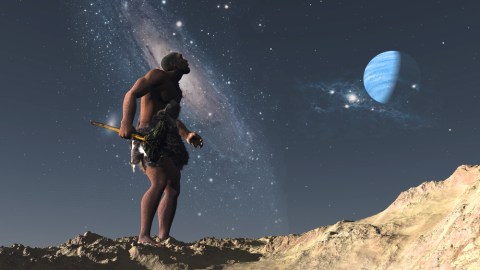What Paleontology Teaches Us About Our Own Future

Paleontology is an amazing field because there’s this curious fact that our planet buries its dead. That didn’t have to be the case but it does turn out that in many parts of the planet when an animal or plant dies it can be buried by things like landslides or mudflows or river mud or tar or ice.
If buried rapidly enough that organism or the remains of that organism remain in the ground until later erosion exposes it for paleontologists to come along and find. What we didn’t know before is that things go extinct. Before we knew about fossils we didn’t know there were things that lived that don’t live now. So it’s framed not only our understanding of evolution but of extinction.
We’ve discovered extraordinary things. We’ve discovered things like snakes with legs and whales with legs and dinosaurs that are 90 feet long and things that we would have never imagined had ever lived but did live because they left their bodies buried in the Earth’s outer layers.
What that means is that Darwin’s insight that all things are related is deeply relevant to the genome and our understanding of how our bodies work. This is also recorded in depth in the Earth’s past.
Since we’ve only been digging fossils for the last couple of hundred years and there haven’t been that many paleontologists digging. The amazing thing is that most of the amazing fossils are yet to be found. They continue to show up in construction sites and roadways and excavations or as the result of focused expeditions to various places where people dig and look for fossils.
We’re literally learning as much about the evolution of life on Earth by looking at what happened in the past as we are at looking at the breakthroughs in genomics and DNA of living things.
In Their Own Words is recorded in Big Think’s studio.
Image courtesy of Shutterstock





